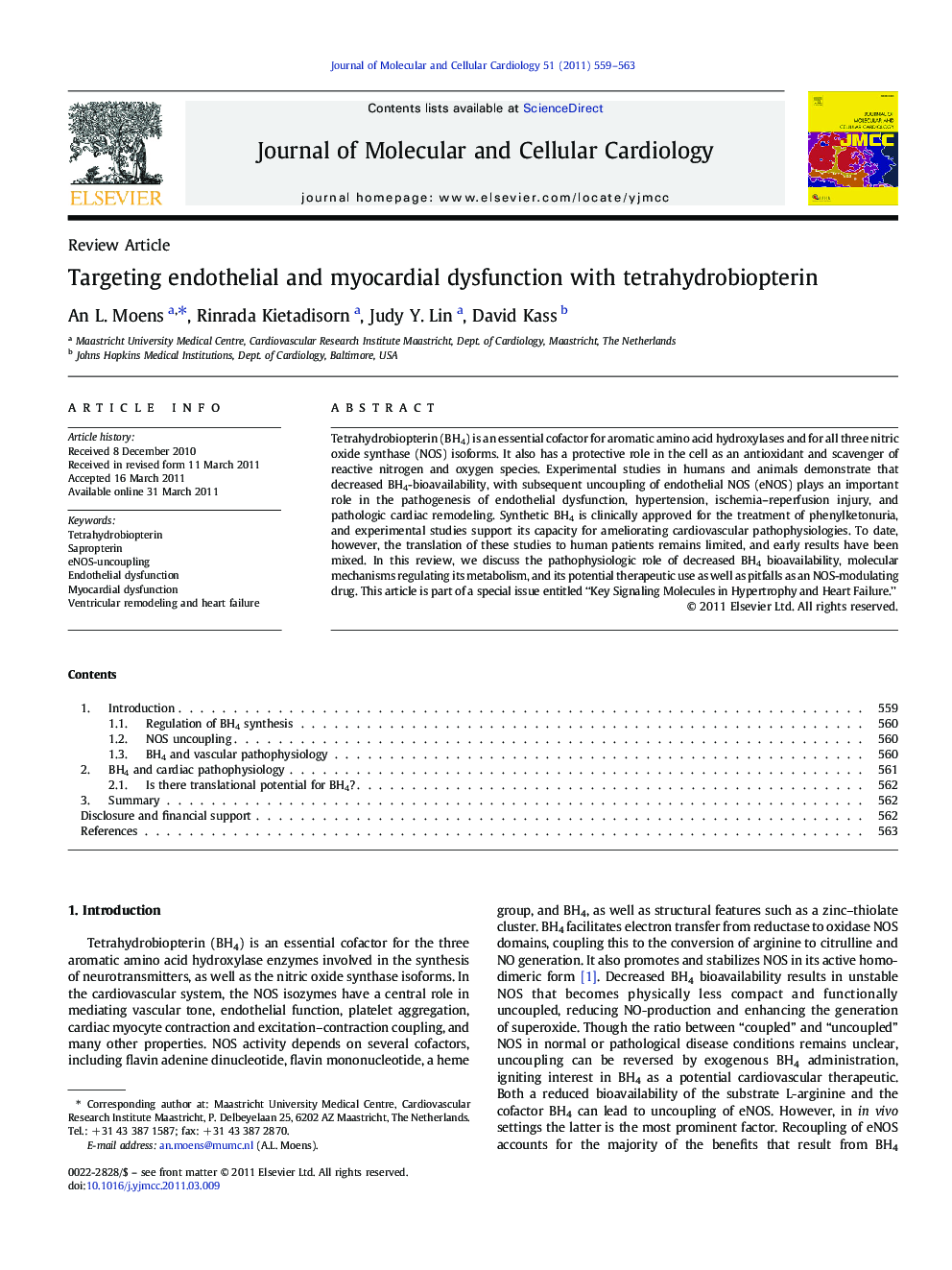| Article ID | Journal | Published Year | Pages | File Type |
|---|---|---|---|---|
| 2190831 | Journal of Molecular and Cellular Cardiology | 2011 | 5 Pages |
Tetrahydrobiopterin (BH4) is an essential cofactor for aromatic amino acid hydroxylases and for all three nitric oxide synthase (NOS) isoforms. It also has a protective role in the cell as an antioxidant and scavenger of reactive nitrogen and oxygen species. Experimental studies in humans and animals demonstrate that decreased BH4-bioavailability, with subsequent uncoupling of endothelial NOS (eNOS) plays an important role in the pathogenesis of endothelial dysfunction, hypertension, ischemia–reperfusion injury, and pathologic cardiac remodeling. Synthetic BH4 is clinically approved for the treatment of phenylketonuria, and experimental studies support its capacity for ameliorating cardiovascular pathophysiologies. To date, however, the translation of these studies to human patients remains limited, and early results have been mixed. In this review, we discuss the pathophysiologic role of decreased BH4 bioavailability, molecular mechanisms regulating its metabolism, and its potential therapeutic use as well as pitfalls as an NOS-modulating drug. This article is part of a special issue entitled ‘‘Key Signaling Molecules in Hypertrophy and Heart Failure.’’
Research Highlights► Uncoupling of eNOS has a major role in the pathogenesis of myocardial and endothelial dysfunction. ► Tetrahydrobiopterin (BH4) can recouple uncoupled eNOS. ► A major advantage is the fact that BH4 is already FDA approved for phenylketonuria (PKU).
